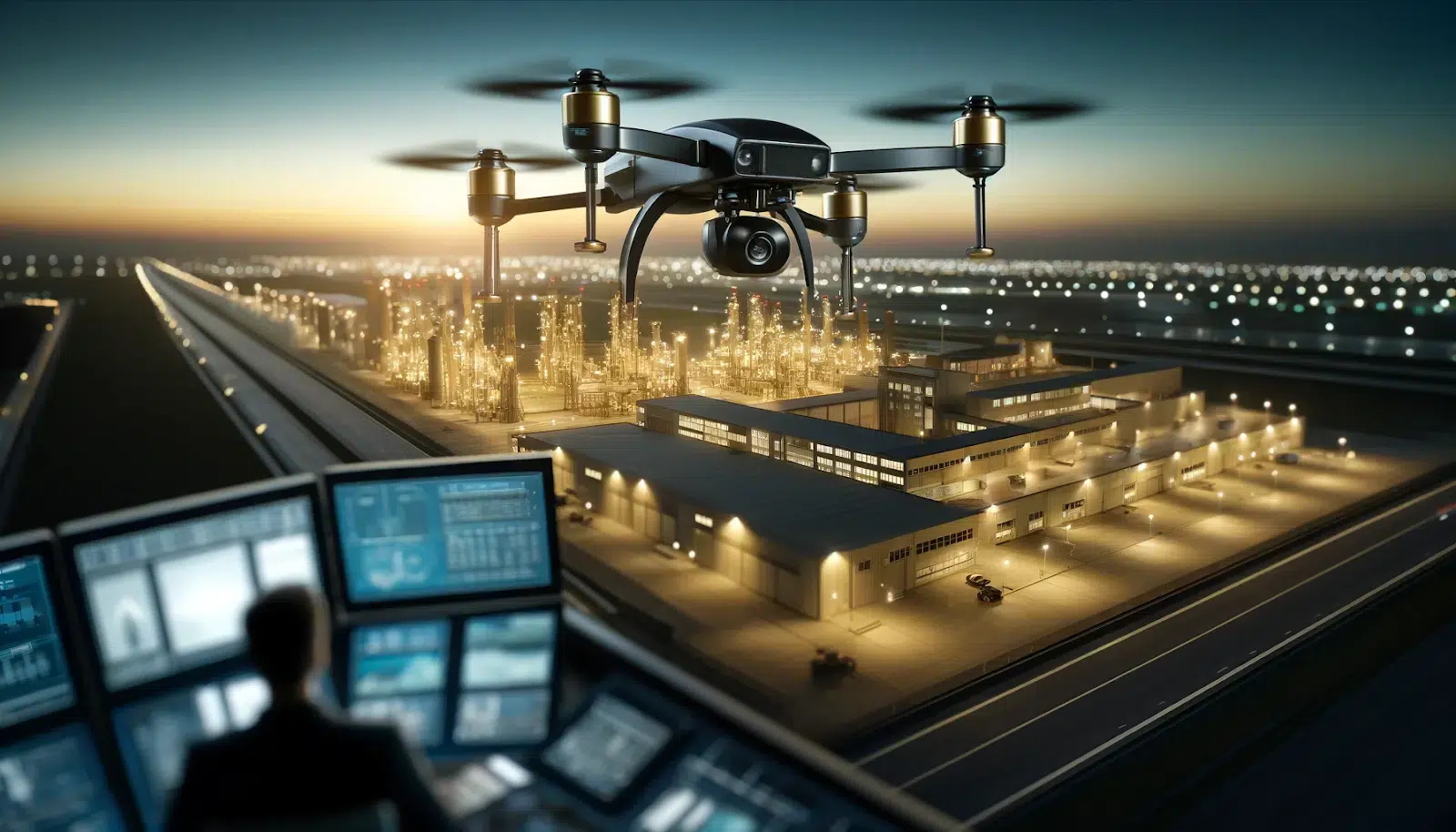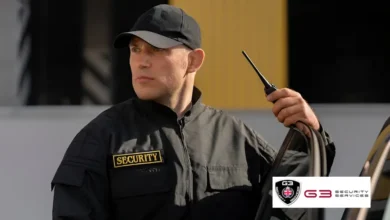
Introduction
The security industry in the United Kingdom has undergone a remarkable transformation in the last decade. Rising crime rates in rural and urban areas, increased trespassing on construction sites, metal theft, vandalism, and the need for 24/7 asset protection have made traditional security measures insufficient on their own.
To combat these evolving threats, many UK security companies now deploy Drone Patrol Units and Canine Response Teams—two advanced solutions that, when used together, create a powerful, multi-layered security shield.
Why Modern Security Needs More Than Guards and Cameras
Static CCTV systems and manned guards have been the backbone of British security for decades. However, these systems can be reactive rather than proactive.
For example:
- CCTV: Cameras can only see where they are fixed. Blind spots, weather conditions, and low lighting can limit their effectiveness.
- On-site guards: A guard can only be in one place at a time. Covering large industrial estates, open farmland, solar farms, or events with hundreds of acres is physically impossible.
Criminals are also becoming more sophisticated, using knowledge of these limitations to exploit gaps.
This is where aerial drone patrols and canine response units fill the gap, bringing speed, adaptability, and intelligence-driven protection.
DRONE PATROL SERVICES – The Aerial Advantage
Drones, or UAVs (Unmanned Aerial Vehicles), are revolutionising how sites are monitored and protected in the UK.
1. Rapid Deployment
Unlike fixed CCTV, a drone can be deployed within minutes. When an alarm is triggered on a site, a trained operator launches the drone, and in seconds it can be over the exact location providing a bird’s-eye view.
This reduces response time drastically compared to waiting for a patrol vehicle or guard to reach the area.
2. Wide-Area Coverage
Large rural properties, agricultural land, wind farms, solar farms, industrial warehouses, and even ports can span hundreds of acres.
Instead of having dozens of cameras or many patrol guards, a drone can:
- Fly over these areas quickly.
- Scan from high above to identify trespassers, fires, leaks, or suspicious activity.
This allows one drone to do the work of multiple cameras and security guards combined.
3. Advanced Surveillance Technology
Modern drones are fitted with:
- High-definition video cameras (4K or more)
- Thermal imaging to detect heat signatures (perfect for night use)
- Zoom lenses for close-up identification
- Real-time video streaming to a control room
These technologies mean criminals cannot hide, even in total darkness.
4. Evidence Gathering
All drone footage is recorded and stored securely. If a crime occurs, these recordings become crucial evidence for police investigations or court cases.
This makes drones not just a deterrent but a key part of forensic investigations.
5. Cost-Effectiveness
Hiring a team of guards to monitor a large site 24/7 is expensive. Drones reduce manpower costs while increasing the area covered.
They complement guards rather than replace them, making the whole operation more efficient.
6. Deterrence and Prevention
The presence of a drone overhead sends a clear message:
“This site is being actively monitored.”
Criminals are less likely to approach when they know aerial surveillance is in operation.
CANINE RESPONSE UNITS – The Human and Canine Partnership
While drones cover the skies, security dogs (K9 units) provide unbeatable capability on the ground.
1. Superior Detection Skills
Dogs have an extraordinary sense of smell, hearing, and instinct. They can:
- Detect intruders hiding in bushes or behind buildings.
- Track a suspect over long distances.
- Identify drugs, weapons, or explosives if trained for detection roles.
2. Immediate Ground Response
When an intrusion is confirmed by CCTV or a drone, a canine unit can be directed straight to the location.
Dogs are naturally fast, agile, and can confront suspects quickly and safely, holding them until police arrive.
3. Strong Deterrence
The visual presence of a security dog is often enough to prevent a crime.
Trespassers are far less likely to approach a site patrolled by a handler with a trained dog.
4. Protection of People and Assets
Dogs are trained not only to detect and deter but also to defend their handler and the property.
This adds a layer of personal safety for staff and security personnel, particularly in isolated locations.
5. Highly Trained Teams
In the UK, professional canine handlers receive training under NASDU (National Association of Security Dog Users) standards. This ensures the dogs and handlers:
- Respond under control.
- Operate within strict legal guidelines.
- Use force proportionally and only when required.
COMBINED OPERATIONS – The Perfect Security Partnership
The greatest strength comes from combining drones with canine response units. This integrated model works as follows:
- Detection:
Drones continuously patrol large areas from the sky, identifying suspicious movement or heat signatures. - Verification:
Control rooms watch the live feed and confirm if it’s a trespasser, intruder, or other issue. - Ground Deployment:
A canine team is dispatched to the precise location while the drone continues to track the intruder from the air. - Interception and Containment:
The dog unit intercepts, confronts, and detains the trespasser until authorities arrive, all while being guided by real-time aerial information.
Benefits of this combined model:
- Near-zero blind spots.
- Fastest response time possible.
- Deterrence both from above and on the ground.
- Evidence collection and live intelligence.
Compliance and Regulations in the UK
Security companies providing drone and canine services adhere to strict UK regulations:
- Drones: Must follow Civil Aviation Authority (CAA) rules. All operators must be licensed, and flights are logged for compliance.
- Data Protection: Any video or data captured is processed under UK GDPR laws.
- Dogs: Handlers must comply with NASDU and Security Industry Authority (SIA) standards, ensuring professionalism and safety.
Where Are These Services Used?
Drone patrols and canine response units are commonly used across:
- Construction sites and development projects
- Critical national infrastructure (utilities, telecoms, railways)
- Airports and ports
- Renewable energy installations (solar farms, wind farms)
- Warehouses and logistics hubs
- High-profile events, concerts, and festivals
- Private estates and rural properties
Conclusion
In a world where security threats are becoming more complex, the combination of Drone Patrol Services and Canine Response Units represents a smart, modern, and highly effective solution for UK organisations and property owners. This integrated, proactive approach ensures that risks are detected early, acted upon quickly, and handled professionally, providing peace of mind and robust protection 24/7.






AdamNixon@jourrapide.com
It’s great to see platforms prioritizing responsible play! Building a ‘player codex’ like with og777 app, focusing on verification, feels like a smart step towards a healthier experience. Enjoy the games, but play wisely! ✨
It’s easy to get carried away with online casinos, so responsible play is key! Seeing platforms like ph978 casino prioritize KYC & secure logins is good-it’s about protecting players. Check out ph978 casino games for a compliant experience, but always gamble within your means!
Great article! It’s smart to focus on secure registration – so important these days. KKKJILI seems to really prioritize that, with options like two-factor authentication. Thinking of checking out kkkjili casino and their easy deposit methods too!
That’s a great point about longshot value – often overlooked! Seeing platforms like 2jl slot cater to local payment methods like GCash really boosts accessibility for Filipino players, making betting easier. Interesting analysis!
The phbingoapp is fire! Perfect for killing time on my commute. Easy to use and tons of different bingo rooms to choose from. Download it, you won’t regret it.